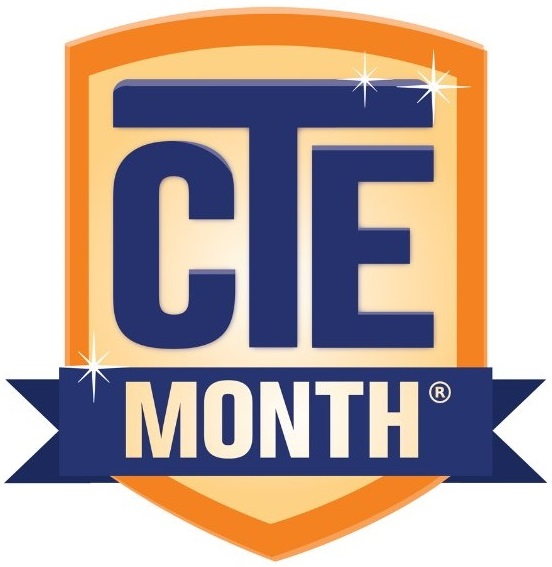February is CTE Month
 Each February we celebrate Career and Technical Education (CTE) and the opportunities that students receive by participation in programs that help them develop technical skills, employability skills and self-awareness about their employment options. Early career exploration provides valuable insights into individual interests and aptitudes, enabling students to align their passions with a suitable CTE program. Now is also a great time to energize students to consider participating in a CTE program of study during forecasting.
Each February we celebrate Career and Technical Education (CTE) and the opportunities that students receive by participation in programs that help them develop technical skills, employability skills and self-awareness about their employment options. Early career exploration provides valuable insights into individual interests and aptitudes, enabling students to align their passions with a suitable CTE program. Now is also a great time to energize students to consider participating in a CTE program of study during forecasting.
What is your school or district doing to feature the accomplishments of CTE programs of study? Are you thanking CTE teachers, highlighting student work, and hosting a CTE showcase event for students and families?
Revisit the January CCL newsletter for ideas and resources to promote CTE in your school or district! Share with the rest of the state too!
To promote the importance of CTE, the CTE Youth Advisory Council, sponsored by the Oregon Department of Education and the Higher Education Coordinating Commission, has launched the #ThisIsCTE social media campaign in February 2024. Follow ODE on X to see how students are engaging, growing and learning thanks to CTE.
State Board Approves Temporary Rule In Response to Winter Storm
.JPG) We recognize students need to be in school with access to opportunities for instructional time and we appreciate all of your efforts to provide rich instructional time for Oregon’s scholars.
We recognize students need to be in school with access to opportunities for instructional time and we appreciate all of your efforts to provide rich instructional time for Oregon’s scholars.
Several weeks ago,
ODE Director Dr. Charlene Williams shared a memo outlining ODE’s plan to pursue a temporary rule with the State Board of Education that would provide districts up to 14 hours of instructional time due to school closures caused by extreme weather.
OAR 581-002-0035 Waivers and Permissions was adopted by the State Board at its meeting on February 15.
This is a temporary rule in line with steps the state took in 2017 following an emergency weather declaration. This temporary rule is specific to this school year in response to the devastating impacts of the January winter storm. There is no requirement that a district pursue this waiver. For districts that do apply, there is no requirement that they request the full allowable 14 hours.
Differentiated Solution Path for Instructional Time Shortfalls
Under this temporary rule, districts faced with a significant number of lost days due to inclement weather have two options for the 2023-24 school year.
-
Permission Option: Districts can request permission under 581-002-0035(4) to count towards the instructional time requirement up to 14 hours for emergency school closures due to adverse weather conditions and facilities failures.
-
Waiver Option: If 14 hours is not enough given the impact the storm had on school facilities and operational capacity, a district may request a one-year waiver of the instructional time requirement, under the existing Division 22 waiver provision in OAR 581-002-0035(1). Requests for a Division 22 waiver must be made in writing and must be approved by a vote of the State Board. Districts seeking a waiver should
contact Susan Payne, ODE’s Education Standards and Systems Specialist, for more information.
Instructions for Submitting Permission Requests (for up to 14 hours)
Districts shall
submit their requests to the Director’s office via this form. Requests must include:
- an explanation for school closures, including the extent of any damages
- the date on which the local School Board approved the request
- any steps the district is taking to add instructional time to the schedule and/or calendar
- a copy of the revised calendar and bell schedules (if applicable)
Permission may be granted by ODE Director Dr. Charlene Williams so long as the request meets the requirements of the rule and demonstrates that the district has exhausted alternatives for adding back instructional time. Districts may expect to receive a response to their request within 5 business days.
We know these unprecedented weather events are becoming more frequent. As we move forward, we must always be clear about the importance of instructional time for students and work with our partners in districts and the legislature to ensure that time is protected. I’ll also note that legislators are currently considering House Bill 4082, legislation that would provide substantial funding for summer learning opportunities across the state. Given the disrupted learning many students have faced this year due to extreme weather and other factors, I’m hopeful we can give our students more time to learn and engage with trusted, caring adults and build connections with each other this summer.